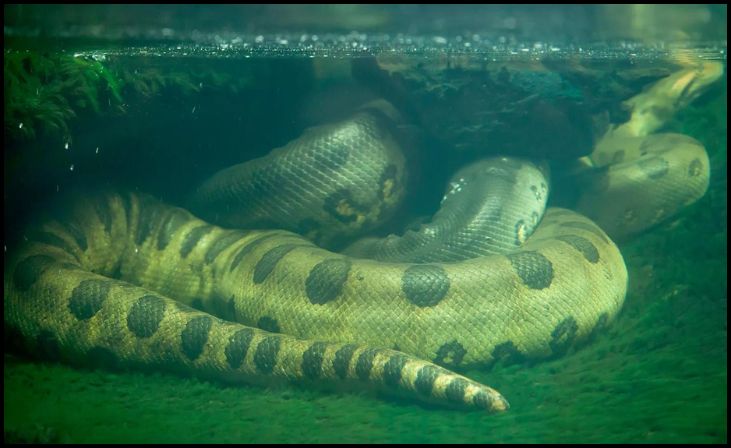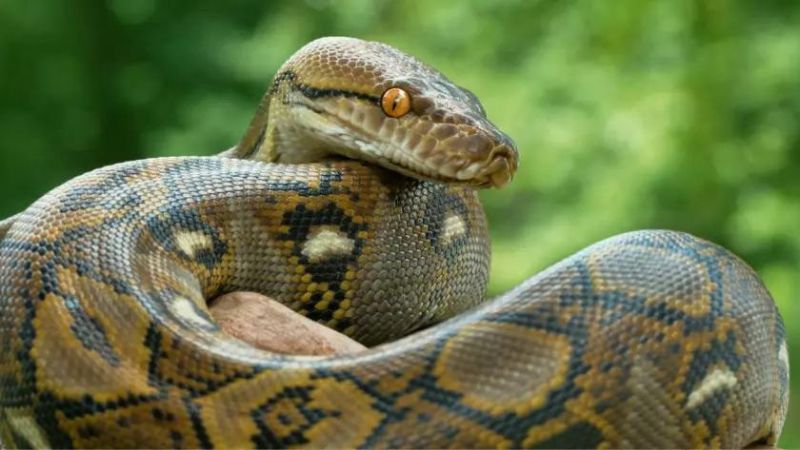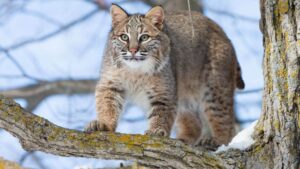The wild landscapes of America are home to an incredible array of wildlife, including some of the largest snakes on the continent. These serpentine giants can be found in a variety of habitats, from dense forests and swamps to arid deserts. They play a crucial role in the ecosystems they inhabit, controlling rodent populations and serving as both predators and prey in their food chains. This blog will introduce you to nine of America’s biggest snakes, exploring their characteristics, habitats, and the fascinating roles they play in the wild.
Eastern Indigo Snake

The Eastern Indigo Snake, known scientifically as Drymarchon couperi, holds the title of the longest snake in North America, capable of reaching lengths up to 9 feet. This non-venomous snake is primarily found in the southeastern United States, especially in Florida and Georgia. The Eastern Indigo Snake is easily recognizable by its glossy, iridescent blue-black coloration. Despite its size, it is a docile species that poses no threat to humans. The snake’s diet is varied, including small mammals, birds, frogs, and other reptiles. Its presence is vital for maintaining ecological balance as it helps control the populations of its prey species.
Eastern Diamondback Rattlesnake
The Eastern Diamondback Rattlesnake (Crotalus adamanteus) is the largest venomous snake in North America, often exceeding 8 feet in length and weighing up to 10 pounds. Found predominantly in the southeastern United States, this rattlesnake prefers dry, sandy areas like pine forests and coastal dunes. It is characterized by its distinctive diamond-shaped pattern along its back. The Eastern Diamondback is a powerful predator, feeding primarily on small mammals and birds. Its venom is potent, used to immobilize prey quickly. This snake’s rattle, located at the end of its tail, serves as a warning to potential threats, making it one of the most iconic reptiles in the Americas.
Green Anaconda

Although not native to the continental United States, the Green Anaconda (Eunectes murinus) is worth mentioning due to its presence in the wilds of South America and occasional appearances in the southern U.S. as an invasive species. This colossal snake is one of the heaviest and longest in the world, capable of reaching lengths of over 30 feet and weighing up to 550 pounds. The Green Anaconda prefers aquatic habitats like swamps, marshes, and rivers, where it ambushes a variety of prey, including fish, birds, mammals, and even caimans. Its immense size and strength make it a formidable predator, yet it is often reclusive and avoids human contact.
Boa Constrictor
The Boa Constrictor (Boa constrictor) is a large, non-venomous snake found throughout Central and South America, with populations also present in Florida as an invasive species. These snakes can grow up to 13 feet in length and weigh as much as 60 pounds. They thrive in a variety of environments, from tropical rainforests to arid deserts. Boa Constrictors are known for their method of subduing prey: they constrict their victims until they suffocate. Their diet mainly consists of small to medium-sized mammals and birds. Despite their intimidating size, Boa Constrictors are relatively slow-moving and rely on their camouflage to avoid detection by both prey and predators.
Reticulated Python

The Reticulated Python (Malayopython reticulatus) is native to Southeast Asia but has established populations in South Florida due to the pet trade and subsequent release or escape. This python is one of the longest snakes in the world, with some individuals exceeding 20 feet in length. The Reticulated Python is distinguished by its intricate, net-like patterning. It inhabits a range of environments, from rainforests to grasslands. As a powerful constrictor, it preys on a variety of animals, including mammals and birds. In Florida, it poses a threat to native wildlife, contributing to the decline of several species through predation and competition.
Burmese Python
The Burmese Python (Python bivittatus) is another large non-native species that has established a significant population in Florida, particularly in the Everglades. These snakes can grow up to 23 feet long and weigh over 200 pounds. The Burmese Python’s presence in the U.S. is largely due to the exotic pet trade. In the wild, it inhabits marshes, swamps, and grasslands. The snake’s diet is varied and includes mammals, birds, and even alligators. Its rapid reproduction and adaptability have made it a formidable invasive species, leading to efforts to control its population to protect native ecosystems.
Yellow Anaconda
The Yellow Anaconda (Eunectes notaeus), native to South America, is another large constrictor that occasionally appears in the southern United States as an invasive species. This snake can reach lengths of 13 feet and weigh up to 120 pounds. It prefers aquatic environments such as rivers, swamps, and marshes. The Yellow Anaconda is an ambush predator, feeding on fish, birds, and small mammals. Although not as large as its cousin, the Green Anaconda, it is still a powerful predator. In regions where it has been introduced, it poses a threat to local wildlife due to its predatory habits and adaptability.
Black-Tailed Rattlesnake
The Black-Tailed Rattlesnake (Crotalus molossus) is a large venomous snake found in the southwestern United States and Mexico. It can grow up to 4.5 feet in length, with some individuals reaching 6 feet. This rattlesnake is named for its distinctive black tail and has a range of color variations depending on its habitat, from yellow and brown to greenish hues. It inhabits rocky hillsides, deserts, and forests. The Black-Tailed Rattlesnake’s diet consists mainly of small mammals, birds, and reptiles. Its venom is highly effective in subduing prey and serves as a defense mechanism against predators.
Western Diamondback Rattlesnake
The Western Diamondback Rattlesnake (Crotalus atrox) is one of the most recognizable and widespread rattlesnakes in the United States, inhabiting regions from Arkansas and Oklahoma to California. This snake can grow up to 7 feet in length and is known for its distinctive diamond-shaped patterns and characteristic rattle. The Western Diamondback prefers arid environments such as deserts, scrublands, and rocky hillsides. It preys on small mammals, birds, and other reptiles. The snake’s venom is potent and used primarily for hunting, but it also serves as a strong deterrent against predators. Its aggressive defense behavior makes it one of the more feared snakes in North America.
Conclusion
America’s largest snakes are remarkable creatures that play essential roles in their ecosystems. From the enormous Green Anaconda to the venomous Eastern Diamondback Rattlesnake, each of these giants contributes to maintaining the balance of nature. While some of these snakes have become invasive species causing ecological concerns, others are native treasures that highlight the biodiversity of the continent. Understanding and respecting these reptiles is crucial for their conservation and the health of our natural environments. Whether admired from a safe distance or studied for their ecological impact, these snake giants remain some of the most fascinating inhabitants of the wild.


